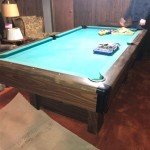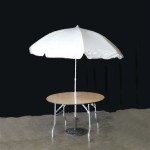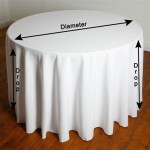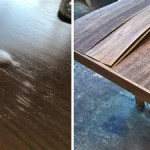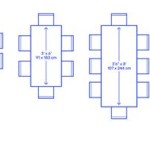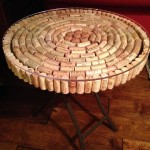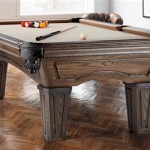Queen Anne Bedside Tables: Elegance and Functionality for the Bedroom
Queen Anne furniture, recognized for its graceful curves, cabriole legs, and understated ornamentation, holds a distinguished place in furniture history. Originating during the reign of Queen Anne (1702-1714), this style represents a shift away from the heavier, more elaborate Baroque designs of the previous era. Queen Anne bedside tables, in particular, offer a refined blend of elegance and practicality, making them a desirable addition to any bedroom seeking a touch of classic sophistication. These tables are not merely functional surfaces; they are statements of taste, reflecting a preference for graceful lines and subtle details that elevate the overall aesthetic of the room.
The enduring appeal of Queen Anne bedside tables stems from their ability to seamlessly integrate into various interior design schemes. While historically accurate reproductions find favor in traditional or period-style bedrooms, their clean lines and relatively simple silhouettes also allow them to harmonize with more contemporary settings. The versatility of these tables lies in their ability to add a touch of warmth and character without overwhelming the space. Their refined aesthetic lends itself well to creating a balanced and inviting atmosphere in the bedroom, a space designed for relaxation and rest.
The construction of Queen Anne bedside tables typically involves the use of hardwoods such as walnut, cherry, or maple. Walnut, in particular, was a favored choice during the Queen Anne period, prized for its rich color and fine grain. These hardwoods provide the necessary strength and stability for enduring use, while also showcasing the beauty of natural wood grain. The surfaces are often finished with a clear lacquer or varnish to protect the wood and enhance its natural luster. The careful selection of materials and meticulous craftsmanship are hallmarks of quality Queen Anne furniture, ensuring that these bedside tables will remain cherished pieces for generations.
Key Features of Queen Anne Bedside Tables
Several distinguishing features characterize Queen Anne bedside tables, contributing to their unique charm and appeal. Understanding these elements allows for accurate identification and informed appreciation of this furniture style. The defining characteristics are not merely decorative but also serve functional purposes that enhance the overall design.
Cabriole Legs: Perhaps the most recognizable feature of Queen Anne furniture, the cabriole leg is an S-shaped curve that gracefully tapers from the knee to the foot. This elegant leg design provides both structural support and visual appeal. The curvature lends a sense of lightness and fluidity to the piece, distinguishing it from the straighter, more angular legs found in earlier furniture styles. The feet of cabriole legs typically end in pad feet, club feet, or trifid feet, adding subtle variations to the overall design. The pad foot, resembling a flattened bun, is the most common variation, providing a stable and understated base. The choice of foot detail further enhances the refined and understated elegance of the Queen Anne aesthetic.
Understated Ornamentation: In contrast to the elaborate carvings and ornamentation of the Baroque period, Queen Anne furniture emphasizes simplicity and restraint. Decorative elements are typically subtle and refined, focusing on enhancing the natural beauty of the wood and the graceful lines of the design. Common ornamental details include carved shells, scrollwork, and delicate moldings. These embellishments are skillfully incorporated to add visual interest without overwhelming the overall aesthetic. The focus remains on the elegance of the form rather than excessive ornamentation, highlighting the inherent beauty of the materials and the craftsmanship involved. This understated approach contributes to the timeless appeal of Queen Anne furniture, allowing it to seamlessly integrate into a variety of interior design styles.
Compact Size and Functional Design: Queen Anne bedside tables are typically smaller and more compact than their predecessors, reflecting a shift towards more intimate and comfortable living spaces. This smaller scale makes them ideal for bedrooms of various sizes, providing a practical surface for lamps, books, and other bedside essentials without taking up excessive space. The design often incorporates one or two drawers for storage, offering discreet organization for personal items. The drawers are typically fitted with brass or wood knobs, further enhancing the understated elegance of the piece. The combination of functional storage and a compact size makes Queen Anne bedside tables a practical and stylish addition to the bedroom.
Materials and Construction
The choice of materials and construction methods play a crucial role in the durability and aesthetic appeal of Queen Anne bedside tables. The enduring quality of these pieces is a testament to the skill and craftsmanship of the artisans who created them. Understanding the materials and techniques used in their construction allows for a deeper appreciation of their value and longevity.
Hardwood Selection: As previously mentioned, hardwoods such as walnut, cherry, and maple are commonly used in the construction of Queen Anne bedside tables. These woods are chosen for their strength, stability, and attractive grain patterns. Walnut, with its rich color and fine texture, was particularly popular during the Queen Anne period. Cherry offers a warm, reddish hue and develops a beautiful patina over time. Maple provides a lighter, more neutral tone and is known for its durability. The selection of wood is carefully considered to complement the overall design and aesthetic of the table. The natural beauty of the wood is often highlighted through the use of clear finishes that showcase the grain and color variations.
Joinery Techniques: Traditional joinery techniques, such as dovetail joints, mortise-and-tenon joints, and tongue-and-groove joints, are employed to ensure the structural integrity and longevity of Queen Anne bedside tables. Dovetail joints, known for their interlocking design, are commonly used to connect the drawer sides and fronts, providing exceptional strength and resistance to pulling forces. Mortise-and-tenon joints, where a projecting tenon is inserted into a corresponding mortise, are used to join the legs to the frame of the table, creating a strong and stable connection. These traditional joinery methods require skill and precision, but they result in furniture that is built to last for generations. The careful attention to detail in the joinery is a hallmark of quality Queen Anne furniture.
Finishing and Detailing: The finishing of Queen Anne bedside tables typically involves the application of multiple coats of lacquer or varnish to protect the wood and enhance its natural beauty. The finish is carefully applied and polished to create a smooth and durable surface. Decorative details, such as carved shells, scrollwork, and moldings, are often applied by hand, adding to the unique character and charm of each piece. The hardware, typically made of brass or wood, is carefully chosen to complement the overall design and aesthetic. Small details, such as the shape and size of the knobs and pulls, can significantly impact the overall appearance of the table. The meticulous attention to finishing and detailing is what sets Queen Anne furniture apart from mass-produced pieces, highlighting the skill and artistry of the craftsmen who created them.
Incorporating Queen Anne Bedside Tables into Modern Interiors
While historically associated with traditional interiors, Queen Anne bedside tables can be successfully integrated into a variety of modern design schemes. Their graceful lines and understated elegance make them a versatile addition to any bedroom seeking a touch of classic sophistication. The key to successfully incorporating these pieces is to balance them with contemporary elements and avoid creating a space that feels overly formal or dated.
Mixing and Matching Styles: Pairing Queen Anne bedside tables with modern bedding, lighting, and accessories can create a visually interesting and balanced space. The contrast between the classic lines of the table and the clean lines of contemporary elements can add depth and character to the room. For example, a Queen Anne bedside table can be paired with a minimalist platform bed and a sleek, modern lamp to create a harmonious blend of styles. Avoiding overly ornate or traditional bedding patterns is crucial, opting instead for simple, neutral fabrics that complement the elegance of the table. Experimenting with different textures and materials can further enhance the visual interest of the space.
Color Palette Considerations: The color palette of the room plays a significant role in how Queen Anne bedside tables are perceived. Neutral colors, such as creams, grays, and whites, provide a versatile backdrop that allows the tables to stand out without overwhelming the space. Pops of color can be introduced through artwork, rugs, or accessories to add visual interest and personality. Avoid using overly bright or bold colors, as they can clash with the refined aesthetic of the Queen Anne style. Soft, muted tones tend to work best, creating a calming and inviting atmosphere in the bedroom. The key is to create a cohesive color scheme that complements both the classic and contemporary elements of the room.
Accessorizing with Intention: The accessories chosen to complement Queen Anne bedside tables should be carefully selected to enhance their elegance and functionality. A simple table lamp, a stack of books, and a small vase of flowers are all that is needed to create a stylish and inviting bedside display. Avoid cluttering the surface with too many items, as this can detract from the clean lines and understated elegance of the table. Consider using a small tray to organize smaller items, such as jewelry or keys. The goal is to create a functional and aesthetically pleasing space that is both practical and beautiful. The carefully chosen accessories should complement the overall design of the room, adding a touch of personality and style without overwhelming the space.

Pink Queen Anne Bedside Table Cloud Tree Furniture

Pair Navy Blue Queen Anne Bedside Drawers Cloud Tree Furniture

Queen Anne Burr Walnut Bedside Table With Carved Cabriole Legs For At Pamono

Davies Queen Anne Bedside Cabinet Made Furniture

Vintage Queen Anne Style End Table Side

Upcycled Queen Anne Bedside Table Furniture Restoration Diy

Queen Anne Bedside Nightstands Tables Shabby Chic

Vintage Queen Anne Bedside Tables Completed In A Soft Pink By Shomai Bloom Upcycled Homewares Www Shoma Furniture

Pastel Pink Queen Anne Bedside Table Cloud Tree Furniture

Queen Anne Style Side Table In Provence
Related Posts

